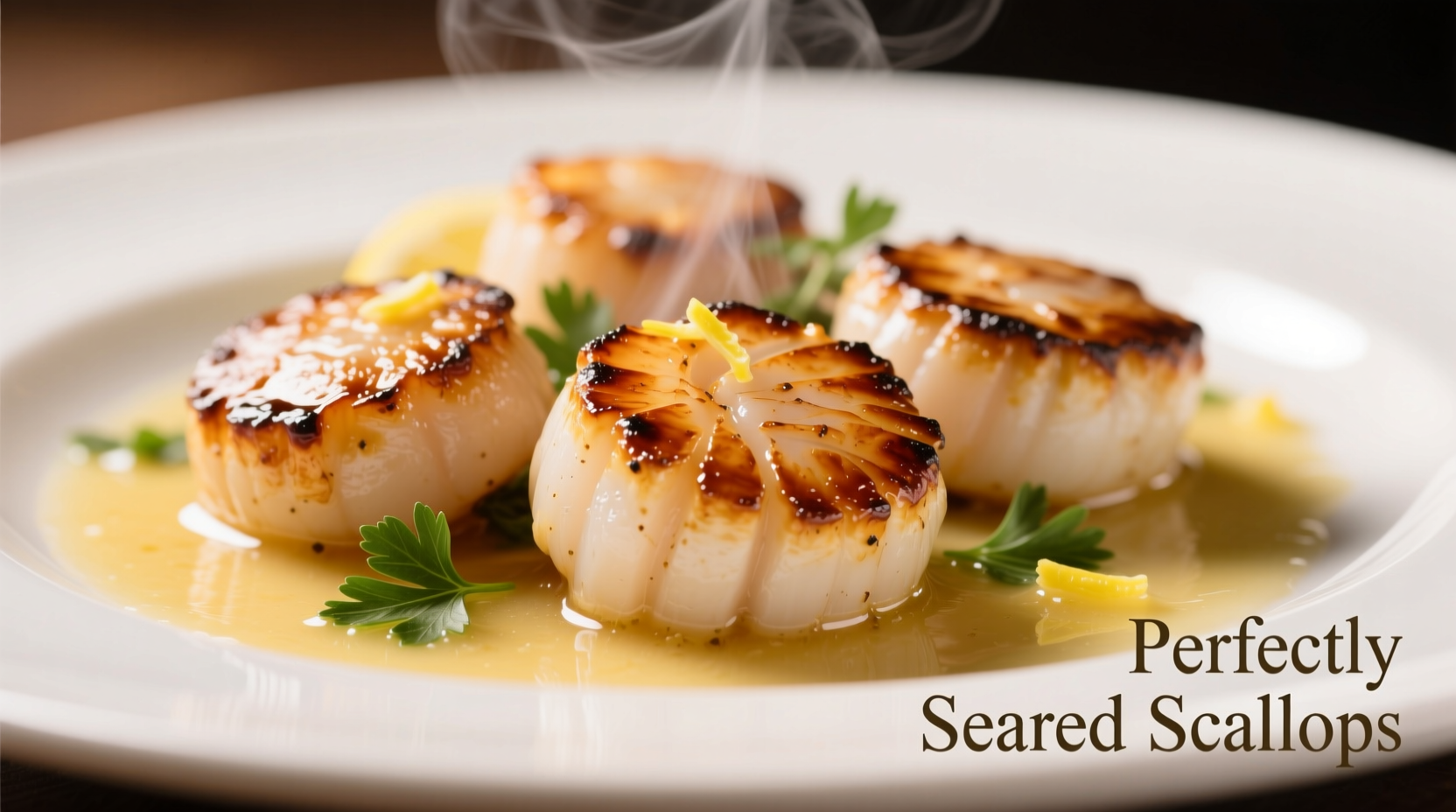Why This Cooking Method Works
Scallops in butter and garlic represents one of the most elegant yet accessible seafood preparations in French cuisine. Unlike many seafood dishes that require complex techniques, this preparation showcases how minimal ingredients—when handled correctly—can create maximum flavor. The natural sweetness of fresh scallops pairs perfectly with the nuttiness of browned butter and the aromatic depth of garlic.
Understanding Your Ingredients
Not all scallops are created equal. The difference between a sublime dish and a disappointing one often starts at the seafood counter. Understanding scallop varieties is crucial for success:
| Scallop Type | Characteristics | Best Cooking Method |
|---|---|---|
| Dry-packed | Naturally harvested, no chemical treatment, ivory color | High-heat searing (ideal for butter garlic preparation) |
| Wet-packed | Treated with sodium tripolyphosphate (STP), appears white, watery | Requires extra drying time; may not develop proper crust |
According to the U.S. Food and Drug Administration, dry-packed scallops contain no additives and naturally retain less moisture, making them superior for searing. Wet-packed scallops can contain up to 30% added water, which prevents proper browning and creates steam during cooking.

The Essential Preparation Process
Professional chefs follow these critical preparation steps before the pan even heats up:
Step 1: Selecting Quality Scallops
Look for "dry-packed" or "dry sea scallops" on the label. Fresh scallops should smell faintly of the ocean—not fishy. They should feel firm to the touch with a slight translucence. Avoid any with dark spots or excessive liquid in the container.
Step 2: Proper Drying Technique
This step makes or breaks your sear. Place scallops on a double layer of paper towels, then cover with additional towels. Refrigerate for 15-20 minutes. For wet-packed scallops, extend drying time to 30 minutes. The goal is completely dry surfaces—any moisture creates steam instead of the Maillard reaction needed for browning.
Step 3: Temperature Control
Remove scallops from refrigerator 10 minutes before cooking. Cold scallops lower pan temperature too quickly, preventing proper searing. Room-temperature scallops develop that essential golden crust in just 90-120 seconds per side.
Mastering the Cooking Technique
The actual cooking process requires precision timing and attention to detail:
The Perfect Sear Sequence
- Heat heavy skillet (cast iron or stainless steel) over medium-high heat until water droplets dance on contact
- Add high smoke-point oil (avocado or grapeseed), not butter yet
- Season scallops with salt only (pepper burns at high heat)
- Place scallops in pan with space between them (crowding causes steaming)
- Cook undisturbed for 1.5-2 minutes until golden brown crust forms
- Flip and cook 1-1.5 minutes for medium-rare center
- Remove scallops immediately to prevent overcooking
Creating the Butter Garlic Sauce
After removing scallops, reduce heat to medium and:
- Add 2 tablespoons unsalted butter to the same pan
- Stir in 2 minced garlic cloves (don't let them brown)
- Add 1 tablespoon lemon juice and 2 tablespoons chopped parsley
- Return scallops to pan for 30 seconds to coat in sauce
Avoiding Common Mistakes
Even experienced home cooks make these critical errors:
Mistake: Using the Wrong Pan
Non-stick pans don't get hot enough for proper searing. Cast iron or stainless steel provides the necessary heat retention. According to culinary research from the Oregon State University Food Innovation Center, stainless steel reaches optimal searing temperatures (350-375°F) faster than non-stick alternatives.
Mistake: Moving Scallops Too Soon
Resist the urge to check if scallops have released from the pan. They'll naturally release when a proper crust has formed. Premature flipping creates uneven browning and tears the delicate flesh.
Mistake: Overcrowding the Pan
Cook in batches if necessary. Too many scallops lower the pan temperature dramatically, causing them to steam rather than sear. Professional kitchens maintain strict spacing—each scallop needs at least one inch of clearance.
When This Method Works Best (and When It Doesn't)
This preparation shines with fresh, high-quality sea scallops but has limitations:
- Ideal for: Special occasions, date nights, impressing guests with minimal effort
- Not recommended: When using previously frozen scallops that weren't properly thawed
- Alternative needed: For bay scallops (which are smaller and more delicate), reduce cooking time to 60 seconds per side
Serving Suggestions That Elevate the Dish
Complete your meal with these professional pairing recommendations:
- Wine pairing: Crisp white like Chablis or unoaked Chardonnay
- Side dishes: Lemon-dressed arugula, roasted asparagus, or cauliflower puree
- Finishing touch: A sprinkle of flaky sea salt just before serving enhances texture
Perfecting Your Technique Through Practice
Mastering scallop searing follows a predictable learning curve. Your first attempt might yield acceptable results, but consistent practice reveals subtle nuances:
- Batch 1-2: Focus on proper drying and pan temperature
- Batch 3-4: Refine timing and develop consistent crust
- Batch 5+: Master sauce integration and presentation
Remember that even professional chefs occasionally encounter imperfect scallops due to natural variations in seafood. The key is understanding which variables you can control versus those you must adapt to.











 浙公网安备
33010002000092号
浙公网安备
33010002000092号 浙B2-20120091-4
浙B2-20120091-4